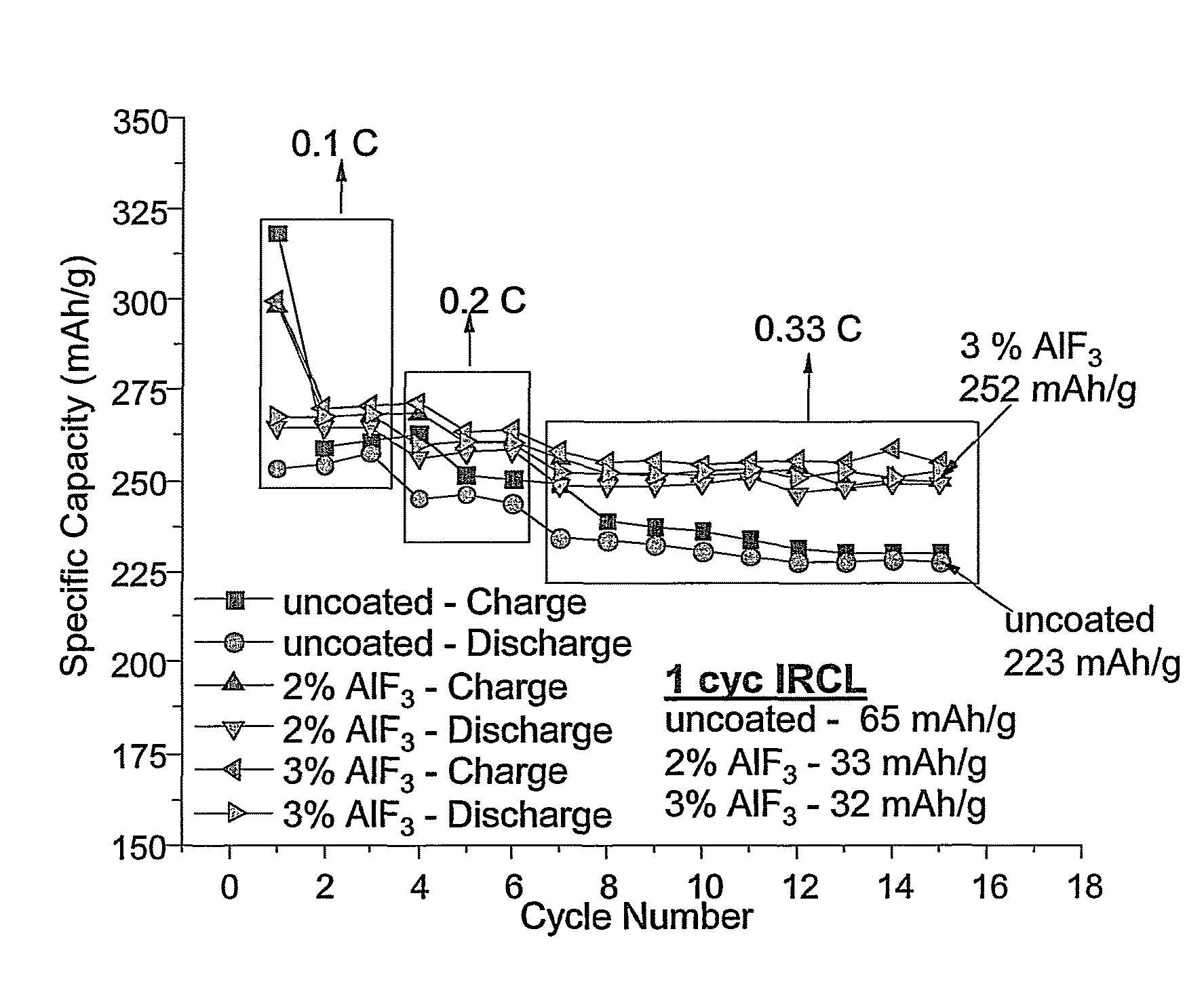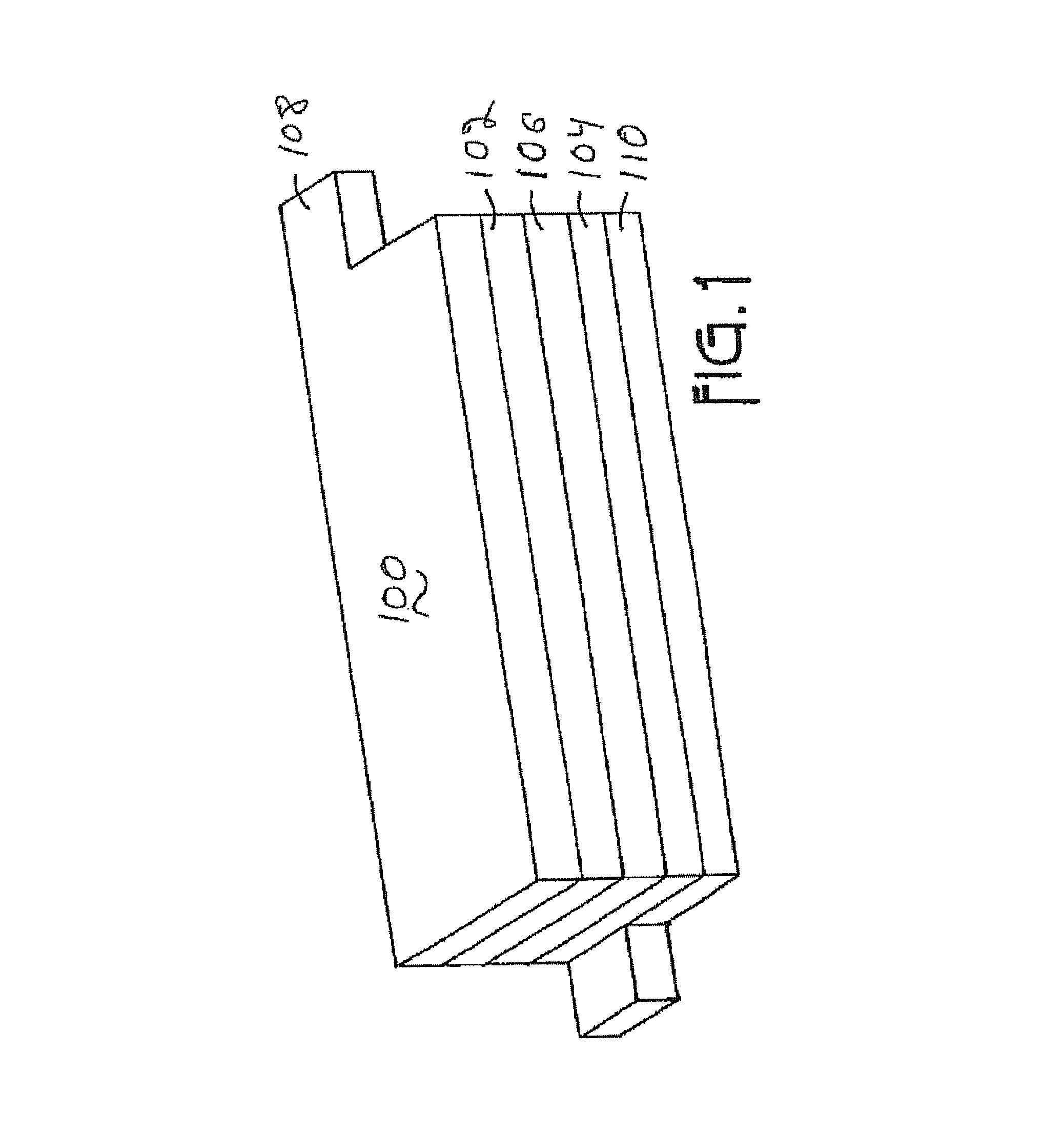Positive electrode materials for lithium ion batteries having a high specific discharge capacity and processes for the synthesis of these materials
a lithium ion battery and active material technology, applied in the direction of cell components, electrochemical generators, nickel compounds, etc., can solve the problems of low energy density of battery cells and no significant improvement in energy density
- Summary
- Abstract
- Description
- Claims
- Application Information
AI Technical Summary
Benefits of technology
Problems solved by technology
Method used
Image
Examples
example 1
Reaction of Metal Acetate with LiOH / NH4OH to Form Lithium Metal Oxide
[0069]This example demonstrates a co-precipitation process based on metal acetates that are precipitated as hydroxides that are subsequently processed into the desired oxide. Lithium is incorporated in the initial precipitation step.
[0070]The processing in this example was performed in an oxygen free atmosphere. Stoichiometric amounts of lithium acetate, nickel acetate, cobalt acetate and manganese acetate in appropriate mole ratio were dissolved in water to form a saturated transition metal acetate solution containing Ni, Co, Mn ions. A saturated solution comprising lithium hydroxide (LiOH) and at least twice the concentration of ammonium hydroxide (NH4OH) in required mole ratio was also prepared. The transition metal acetate solution was dripped slowly into the LiOH / NH4OH solution to allow the formation of precipitates of transition metal hydroxides. Upon completion of the addition of the transition metal acetate...
example 2
Reaction of Metal Acetate with LiOH to Form Lithium Metal Oxide
[0072]This example demonstrates the synthesis of the positive electrode material using a hydroxide co-precipitation approach in which the lithium is introduced in a solid state reaction involving a mixed metal hydroxide.
[0073]The processing in this example through the formation of the dried precipitate was performed in an oxygen free atmosphere. Stoichiometric amounts of nickel acetate (Ni(CH3COO)2.xH2O), cobalt acetate (Co(CH3COO)2.xH2O) and manganese acetate (Mn(CH3COO)2.xH2O) were dissolved in distilled water to form a metal acetate solution. The metal acetate solution was added continuously to a stirred solution of aqueous LiOH solution to allow metal hydroxide to precipitate. The reaction mixture was kept between room temperature and 80° C. with pH around 10-12. The rate of the metal acetate addition, the speed of the stirring, the temperature and pH value of the reaction mixture were adjusted to control the morphol...
example 3
Reaction of Metal Sulfate with NaOH / NH4OH to Form Lithium Metal Oxide
[0076]This example demonstrates a co-precipitation process based on metal sulfate starting materials with base provided as a mixture of sodium hydroxide and ammonium hydroxide.
[0077]The processing in this example through the formation of the dried precipitate was performed in an oxygen free atmosphere. Stoichiometric amounts of metal sulfates (NiSO4.xH2O, CoSO4.xH2O, & MnSO4.xH2O) were dissolved in distilled water to form a metal sulfate aqueous solution. Separately an aqueous solution with a mixture of NaOH and NH4OH was prepared. The two solutions were gradually added to a reaction vessel to form a metal hydroxide precipitate. During the precipitation step, the reaction mixture was stirred at while the temperature of the reaction mixture was kept between room temperature and 80° C. The pH of the reaction mixture was about 10-12. The aqueous metal sulfate solution had a concentration from 1M to 3M, while the aqueo...
PUM
| Property | Measurement | Unit |
|---|---|---|
| temperatures | aaaaa | aaaaa |
| weight percent | aaaaa | aaaaa |
| diameter | aaaaa | aaaaa |
Abstract
Description
Claims
Application Information
 Login to View More
Login to View More - R&D
- Intellectual Property
- Life Sciences
- Materials
- Tech Scout
- Unparalleled Data Quality
- Higher Quality Content
- 60% Fewer Hallucinations
Browse by: Latest US Patents, China's latest patents, Technical Efficacy Thesaurus, Application Domain, Technology Topic, Popular Technical Reports.
© 2025 PatSnap. All rights reserved.Legal|Privacy policy|Modern Slavery Act Transparency Statement|Sitemap|About US| Contact US: help@patsnap.com



